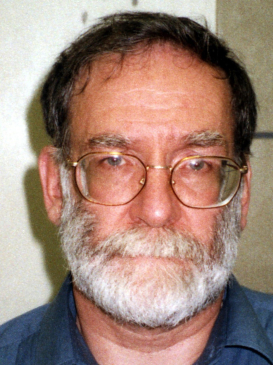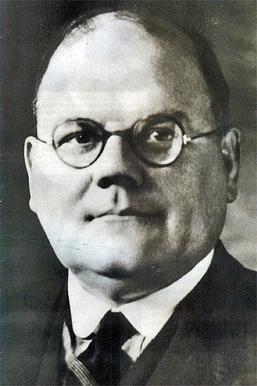Related Research Articles

A serial killer is typically a person who murders three or more persons, with the murders taking place over more than a month and including a significant period of time between them. While most authorities set a threshold of three murders, others extend it to four or lessen it to two.

A consensual crime is a public-order crime that involves more than one participant, all of whom give their consent as willing participants in an activity that is unlawful. Legislative bodies and interest groups sometimes rationalize the criminalization of consensual activity because they feel it offends cultural norms, or because one of the parties to the activity is considered a "victim" despite their informed consent.

Harold Frederick Shipman, known to acquaintances as Fred Shipman, was an English general practitioner and serial killer. He is considered to be one of the most prolific serial killers in modern history, with an estimated 250 victims. On 31 January 2000, Shipman was found guilty of murdering fifteen patients under his care. He was sentenced to life imprisonment with a whole life order. Shipman hanged himself in his cell at HM Prison Wakefield, West Yorkshire, on 13 January 2004, aged 57.
Lust murder, also called sexual homicide, is a homicide which occurs in tandem with either an overt sexual assault or sexually symbolic behavior. Lust murder is associated with the paraphilic term erotophonophilia, which is sexual arousal or gratification contingent on the death of a human being. The term lust killing stems from the original work of Richard von Krafft-Ebing in his 1898 discussion of sadistic homicides. Commonly, this type of crime is manifested either by murder during sexual activity, by mutilating the sexual organs or areas of the victim's body, or by murder and mutilation. The mutilation of the victim may include evisceration, displacement of the sexual organs, or both. The mutilation usually takes place postmortem. Although the killing sequence may include an act of sexual intercourse, sexual intercourse does not always occur, and other types of sexual acts may be part of the homicide.
A proxy murder is a murder that is committed indirectly, most likely by one person ordering another person, or through the use of a third party.

John Bodkin Adams was a British general practitioner, convicted fraudster, and suspected serial killer. Between 1946 and 1956, 163 of his patients died while in comas, which was deemed to be worthy of investigation. In addition, 132 out of 310 patients had left Adams money or items in their wills.
Francis Edward Camps, FRCP, FRCPath was an English pathologist notable for his work on the cases of serial killer John Christie and suspected serial killer John Bodkin Adams.
Sharon Rina Lopatka was an Internet entrepreneur in Hampstead, Maryland, United States who was killed in a case of apparent consensual homicide. Lopatka was tortured and strangled to death on October 16, 1996, by Robert "Bobby" Frederick Glass, a computer analyst from North Carolina. The apparent purpose was mutual sexual gratification.

Scott Wilson Williams is a convicted American serial killer who lived in Monroe, North Carolina. He has been convicted for the murders of three women that took place over a period of nine years. He has also been convicted of crimes against two additional women who were not killed.
"Autopsy" is a television series of HBO's America Undercover documentary series. Dr. Michael Baden, a real-life forensic pathologist, is the primary analyst, and has been personally involved in many of the cases that are reviewed.
Arnfinn Nesset is a Norwegian former nurse, nursing home manager, and a convicted serial killer. His crimes include the murders of at least 22 people, as well as attempted murder, document forgery, and embezzlement. He may have murdered up to 138 people. In 1983, he was convicted of poisoning 22 patients and sentenced to 21 years in prison. He served 12 years and 10 years supervision and is thought to be living under an assumed name.

Lieutenant-Colonel Sir Roland Vaughan Gwynne DSO, DL, JP was a British soldier and politician who served as Mayor of Eastbourne, Sussex, from 1928 to 1931. He was also a patient, close friend, and probable lover of the suspected serial killer Dr John Bodkin Adams.
An angel of mercy or angel of death is a type of criminal offender who is usually employed as a medical practitioner or a caregiver and intentionally harms or kills people under their care. The angel of mercy is often in a position of power and may decide the victim would be better off if they no longer suffered from whatever severe illness is plaguing them. This person then uses their knowledge to kill the victim. In some cases, as time goes on, this behavior escalates to encompass the healthy and the easily treated.
Hiroshi Maeue was a Japanese serial killer who lured his victims via the internet and killed three people in 2005. Also known as the "Suicide Website Murderer", Maeue suffered from a paraphilic psychosexual disorder that translated into being unable to achieve sexual release in the absence of performing an act of strangulation.
Roland E. Clark was an American medical doctor, suspected of being a serial killer. He was convicted of two counts of manslaughter and died in prison.
Percy Kellick Hoskins was the chief crime reporter for the British newspaper the Daily Express in the 1950s. He also provided stories for radio and television crime shows, such as Whitehall 1212.
Internet homicide, also called internet assassination, refers to killing in which victim and perpetrator met online, in some cases having known each other previously only through the Internet. Also Internet killer is an appellation found in media reports for a person who broadcasts the crime of murder online or who murders a victim met through the Internet. Depending on the venue used, other terms used in the media are Internet chat room killer, Craigslist killer, Facebook serial killer. Internet homicide can also be part of an Internet suicide pact or consensual homicide. Some commentators believe that reports on these homicides have overemphasized their connection to the Internet.
Necrophilia is a pathological fascination with dead bodies, which often takes the form of a desire to engage with them in sexual activities, such as intercourse. Though prohibited by the laws of many countries, there have been many reported cases of necrophilia throughout history.
Takahiro Shiraishi is a Japanese serial killer and rapist. He is also known as the "Twitter Killer", which he was labeled as in most media reports at the time of his sentencing. In Zama, Japan, between August and October 2017, he murdered nine people, mostly young women including three high school girls.
References
- ↑ Betzold, Michel,"Appointment with Doctor Death" Troy, MI: Momentum Books 1996
- ↑ Cullen, Pamela V., "A Stranger in Blood: The Case Files on Dr John Bodkin Adams", London, Elliott & Thompson, 2006, ISBN 1-904027-19-9
- ↑ "A death on Usenet: Sharon Lopatka and the strange case of 'consensual murder'". The Daily Dot. July 3, 2016. Retrieved February 8, 2022.
- ↑ "German cannibal tells of fantasy". December 3, 2003. Retrieved February 8, 2022.
- ↑ "Suicide website murderer lived out his fantasies". Japan Today. August 24, 2005. Archived from the original on October 12, 2007. Retrieved March 22, 2008.
- ↑ "Man gets death for murdering suicidal trio". The Japan Times. March 29, 2007. Retrieved February 23, 2008.